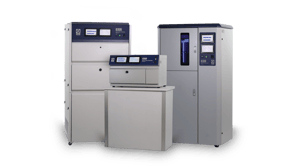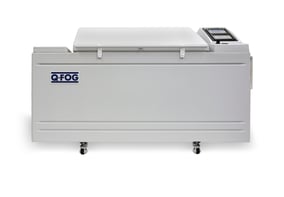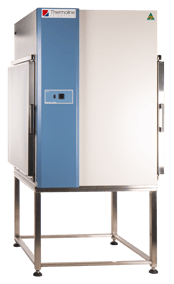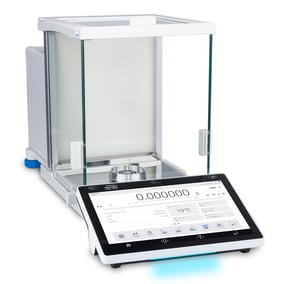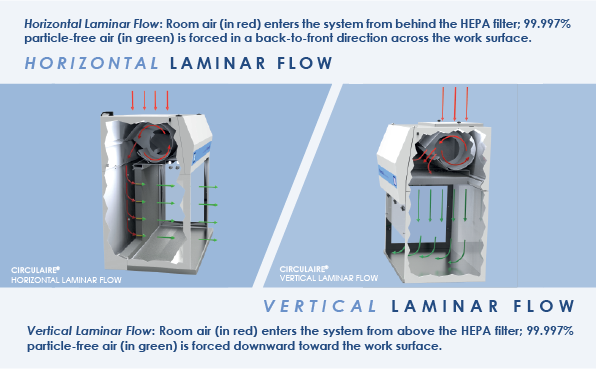
A Laminar Flow system is vital in the control of particulate contamination. Laminar air flow can be described as an entire body of air flow with steady, uniform velocity.
Within a Laminar Flow Cabinet air is initially drawn through an easy-change, high-quality EU4 pre-filter to remove all gross particulate. All air then passes through the fan system, before being pushed through a H15 ULPA filter which removes 99.9998% of all particles >0.12 μm in size. This in turn guarantees an ISO Class 3 (FED Class 1) for Vertical Laminar Flow (VLF) and ISO Class 4 (FED Class 10) for Horizontal Laminar Flow (HWS), particle free working environment and provide the best product protection.
The cabinet is enclosed on three sides and a constant positive air pressure is maintained to prevent the intrusion of any contaminated air.
Most contamination-sensitive environments require laminar flow as it forces particles in a uniform direction, from the cleanest area under the filter face to the exit area, which is generally the working aperture. This design ensures that the cleanest area will always be the upstream area closest to the filter face. Work is generally done in this clean zone, as far as possible from obstructions that create turbulence.
VWS Cabinets are often chosen because they resemble, on a small scale, the design of a Cleanroom, in which fan/filter units are typically positioned in the ceiling. By directing the laminar flow downward, VWS reinforces the effect of gravity and sweeps particles out of the enclosure, generally through a front access area. Micro-contaminants may not have substantial mass, but most particles do eventually settle on a work surface or the floor of a room, and vertical flow helps get them there faster.
If sterile or particle-sensitive processes are performed in a clean, sterile zone midway between the work surface and the filter face, a VWS Cabinet is generally acceptable. One such operation is sterile compounding, in which injectable or sterile packages are prepared above, not on, the work surface. As long as hands and other contamination sources move up and down, not sideways above a sample, sensitive materials will remain clean.
Finally, consider the effects on operators of air exiting the Laminar Flow Cabinet. Although HWS, with air traveling from the rear of the cabinet and exiting through the front opening, may not encounter large obstructions inside the cabinet, it does eventually encounter the person performing the work. Substances, such as soldering fumes or fine powders, may be blown into the operator’s face. While this collision may not compromise the laminar flow where work is performed, it may pose a health risk. In such cases, vertical flow is preferable as it offers greater operator protection.
Vertical Laminar Flow Cabinets:
PROS:
- Greater Operator Protection.
- Cabinet not as deep: requires less floor/worktop space.
- Suitable for compounding sterile products.
- Safety: air will not blow directly at operator and sash provides a barrier.
- Top mounted filter ensures easy access.
- Less turbulence from air striking large objects or equipment.
- Less cross-contamination of items positioned on the work surface.
CONS:
- Extended overhead clearance means changing filters or servicing may require a step-ladder.
- Cannot place items or hands on top of other items as this will obstructs airflow.
- Increased turbulent effect of air striking the work surface.
Horizontal Laminar Flow Hoods:
PROS:
- Greater Product Protection.
- Reduced turbulent effect of air striking work surface.
- No sash: easier to work and position equipment, but air blows directly on operator.
- Hands and gloves are generally less contaminating since they’re downstream of the sample.
CONS:
- Large samples obstruct laminar air flow, may contaminate downstream samples.
- Blows fumes and/or powders in operator’s face.
View our full range of fume hoods via this link: https://www.thermoline.com.au/category/clean-air-solutions?hsLang=en

